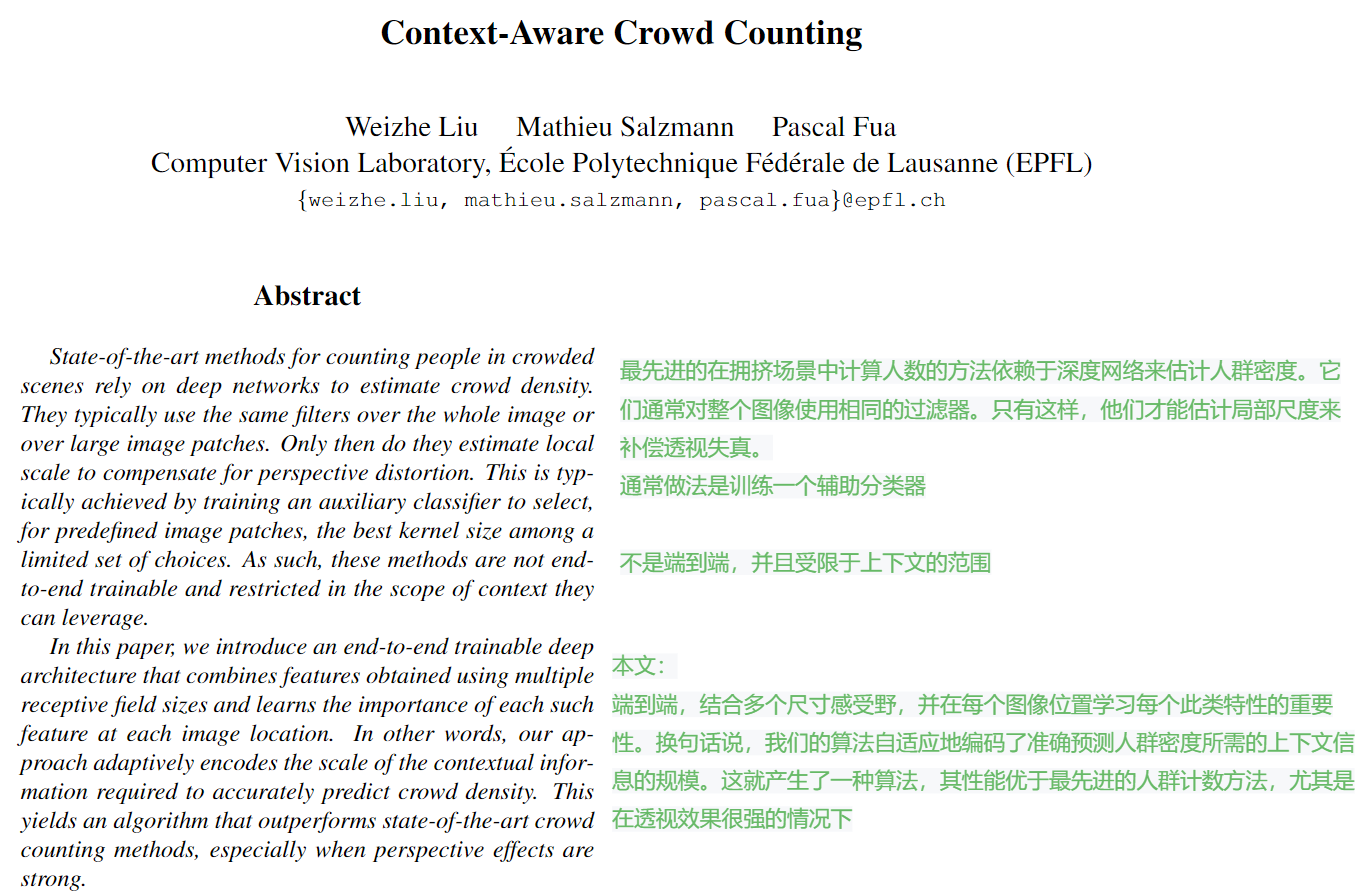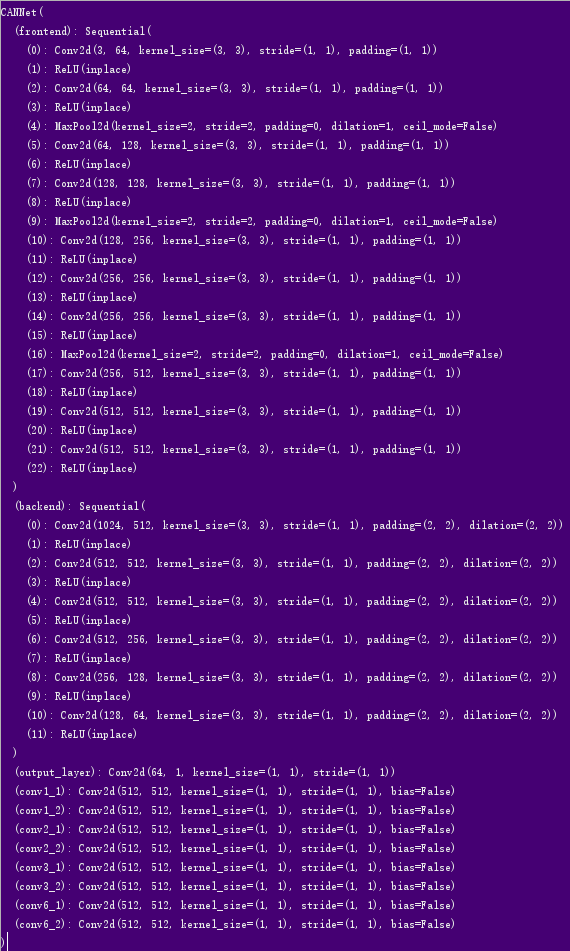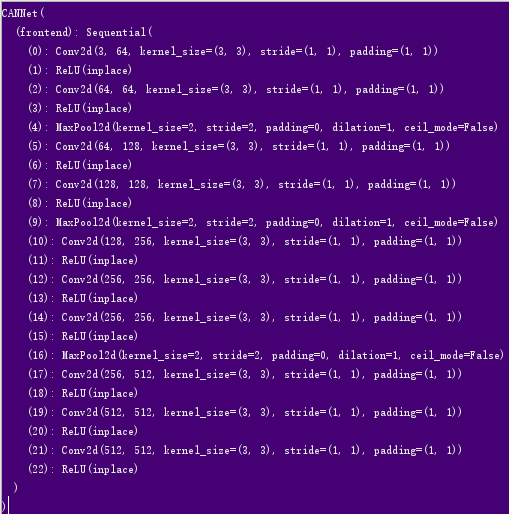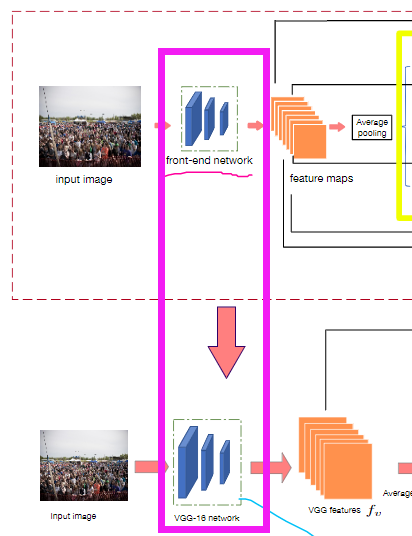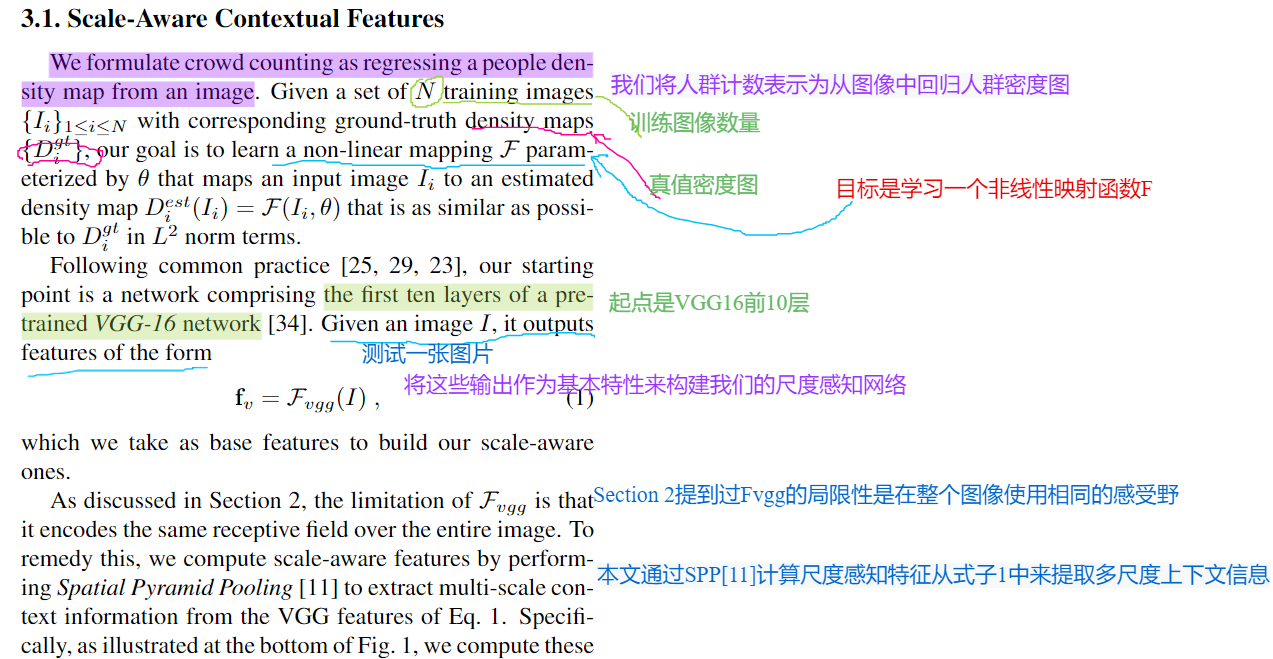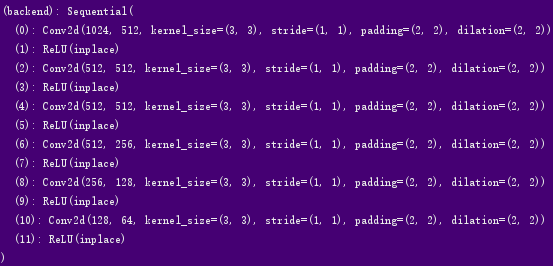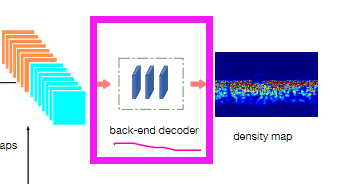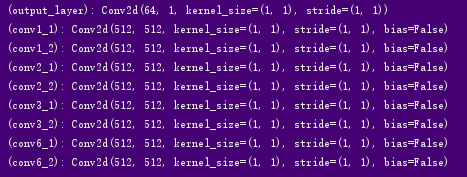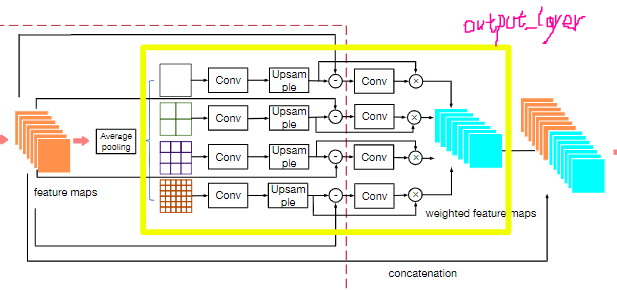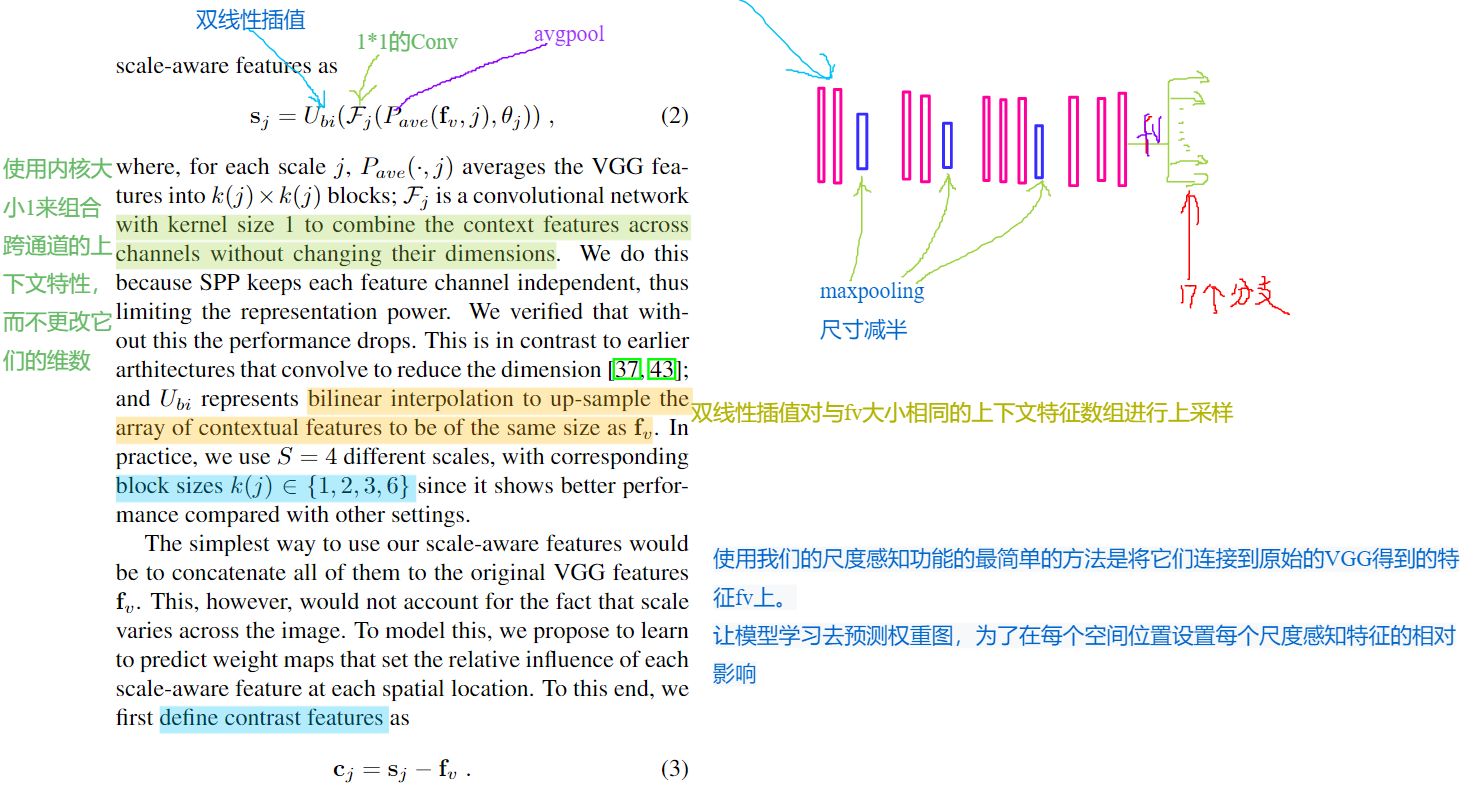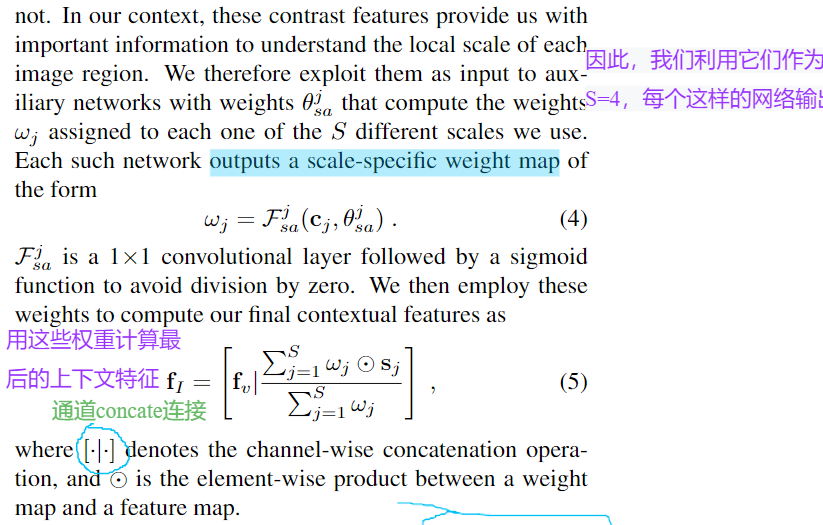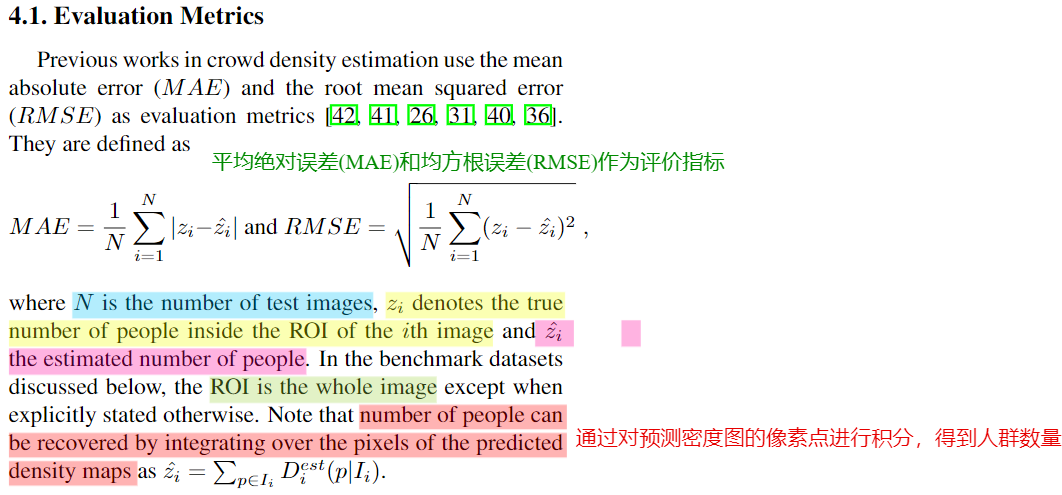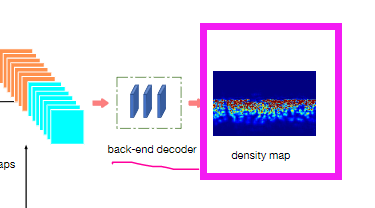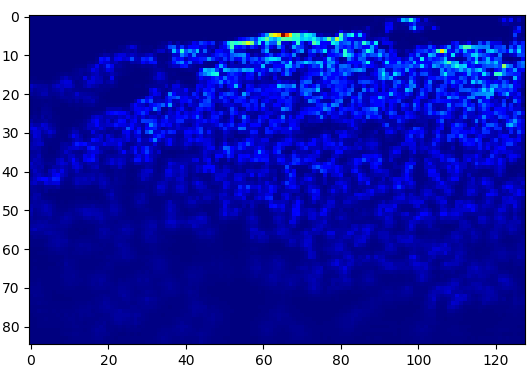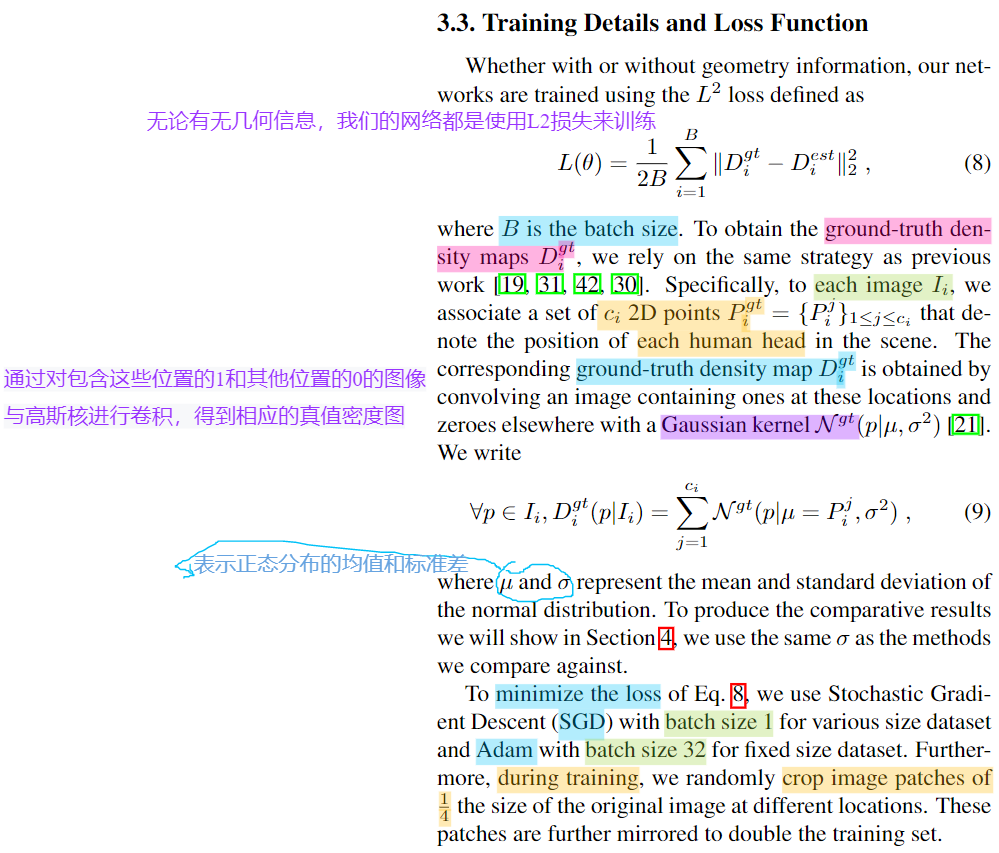This is an simple and clean unoffical implemention https://github.com/CommissarMa/Context-Aware_Crowd_Counting-pytorch of CVPR 2019 paper "Context-Aware Crowd Counting".
- This is my visualized model structure
- This is the diagram of the network structure in the paper
Next, I will explain the network architecture of this paper in the form of code
super(CANNet,self).__init__() #self: CANNet load_weights: False
self.frontend_feat=[64, 64, 'M', 128, 128, 'M', 256, 256, 256, 'M', 512, 512, 512] # frontend_feat: class 'list'>
self.frontend = make_layers(self.frontend_feat) #跳转到下面def make_layers,得到图1结果
and
def make_layers(cfg, in_channels = 3,batch_norm=False,dilation = False): # cfg: <class 'list'>: [64, 64, 'M', 128, 128, 'M', 256, 256, 256, 'M', 512, 512, 512] in_channels = 3,batch_norm=False,dilation = False, 跳转到 else:d_rate = 1
if dilation:
d_rate = 2
else:
d_rate = 1
layers = [] #<class 'list'> : [ ]
for v in cfg: # 依次遍历cfg的list 举个例子:v=64 得到<layer:class 'list'>: [Conv2d(3, 64, kernel_size=(3, 3), stride=(1, 1), padding=(1, 1)), ReLU(inplace)]
if v == 'M':
layers += [nn.MaxPool2d(kernel_size=2, stride=2)]
else:
conv2d = nn.Conv2d(in_channels, v, kernel_size=3, padding=d_rate,dilation = d_rate) #conv2d:Conv2d(3,64,kernel_size=(3,3),stride=(1,1),padding=(1,1))
if batch_norm:
layers += [conv2d, nn.BatchNorm2d(v), nn.ReLU(inplace=True)]
else:
layers += [conv2d, nn.ReLU(inplace=True)]
in_channels = v
return nn.Sequential(*layers) #整个遍历完得到图1
you will get:
- In fact, this is the first 10 layers of VGGNet
- It's described in the paper:
self.backend_feat=[512, 512, 512,256,128,64] # backend_feat: <class 'list'>
and
self.backend = make_layers(self.backend_feat,in_channels = 1024,dilation = True) #跳转到下面def make_layers的dilation = True
and
def make_layers(cfg, in_channels = 3,batch_norm=False,dilation = False): # cfg: <class 'list'>: [64, 64, 'M', 128, 128, 'M', 256, 256, 256, 'M', 512, 512, 512] in_channels = 3,batch_norm=False,dilation = False, 跳转到 else:d_rate = 1
if dilation:
d_rate = 2
else:
d_rate = 1
layers = [] #<class 'list'> : [ ]
for v in cfg: # 依次遍历cfg的list 举个例子:v=64 得到<layer:class 'list'>: [Conv2d(3, 64, kernel_size=(3, 3), stride=(1, 1), padding=(1, 1)), ReLU(inplace)]
if v == 'M':
layers += [nn.MaxPool2d(kernel_size=2, stride=2)]
else:
conv2d = nn.Conv2d(in_channels, v, kernel_size=3, padding=d_rate,dilation = d_rate) #conv2d:Conv2d(3,64,kernel_size=(3,3),stride=(1,1),padding=(1,1))
if batch_norm:
layers += [conv2d, nn.BatchNorm2d(v), nn.ReLU(inplace=True)]
else:
layers += [conv2d, nn.ReLU(inplace=True)]
in_channels = v
return nn.Sequential(*layers)
you will get:
that is :
It's described in the paper:
self.output_layer = nn.Conv2d(64, 1, kernel_size=1) #得到图3
self.conv1_1=nn.Conv2d(512,512,kernel_size=1,bias=False)
self.conv1_2=nn.Conv2d(512,512,kernel_size=1,bias=False)
self.conv2_1=nn.Conv2d(512,512,kernel_size=1,bias=False)
self.conv2_2=nn.Conv2d(512,512,kernel_size=1,bias=False)
self.conv3_1=nn.Conv2d(512,512,kernel_size=1,bias=False)
self.conv3_2=nn.Conv2d(512,512,kernel_size=1,bias=False)
self.conv6_1=nn.Conv2d(512,512,kernel_size=1,bias=False)
self.conv6_2=nn.Conv2d(512,512,kernel_size=1,bias=False)
you will get
It is implemented as follows:
def forward(self,x):
fv = self.frontend(x)
#S=1
ave1=nn.functional.adaptive_avg_pool2d(fv,(1,1))
ave1=self.conv1_1(ave1)
# ave1=nn.functional.relu(ave1)
s1=nn.functional.upsample(ave1,size=(fv.shape[2],fv.shape[3]),mode='bilinear')
c1=s1-fv
w1=self.conv1_2(c1)
w1=nn.functional.sigmoid(w1)
#S=2
ave2=nn.functional.adaptive_avg_pool2d(fv,(2,2))
ave2=self.conv2_1(ave2)
# ave2=nn.functional.relu(ave2)
s2=nn.functional.upsample(ave2,size=(fv.shape[2],fv.shape[3]),mode='bilinear')
c2=s2-fv
w2=self.conv2_2(c2)
w2=nn.functional.sigmoid(w2)
#S=3
ave3=nn.functional.adaptive_avg_pool2d(fv,(3,3))
ave3=self.conv3_1(ave3)
# ave3=nn.functional.relu(ave3)
s3=nn.functional.upsample(ave3,size=(fv.shape[2],fv.shape[3]),mode='bilinear')
c3=s3-fv
w3=self.conv3_2(c3)
w3=nn.functional.sigmoid(w3)
#S=6
# print('fv',fv.mean())
ave6=nn.functional.adaptive_avg_pool2d(fv,(6,6))
# print('ave6',ave6.mean())
ave6=self.conv6_1(ave6)
# print(ave6.mean())
# ave6=nn.functional.relu(ave6)
s6=nn.functional.upsample(ave6,size=(fv.shape[2],fv.shape[3]),mode='bilinear')
# print('s6',s6.mean(),'s1',s1.mean(),'s2',s2.mean(),'s3',s3.mean())
c6=s6-fv
# print('c6',c6.mean())
w6=self.conv6_2(c6)
w6=nn.functional.sigmoid(w6)
# print('w6',w6.mean())
fi=(w1*s1+w2*s2+w3*s3+w6*s6)/(w1+w2+w3+w6+0.000000000001)
# print('fi',fi.mean())
# fi=fv
x=torch.cat((fv,fi),1)
x = self.backend(x)
x = self.output_layer(x)
return x
that is :
It's described in the paper:
and
Then
with torch.no_grad():
for i,(img,gt_dmap) in enumerate(tqdm(dataloader)): # 先跳转到my_dataset.py中的def __len__(self)
img=img.to(device) # torch.Size([1, 3, 704, 1024])
gt_dmap=gt_dmap.to(device) #torch.Size([1, 1, 88, 128])
# forward propagation
et_dmap=model(img) #跳转到cannet中的def forward
mae+=abs(et_dmap.data.sum()-gt_dmap.data.sum()).item()
del img,gt_dmap,et_dmap
print("model_param_path:"+model_param_path+" mae:"+str(mae/len(dataloader)))
The density map :
def estimate_density_map(img_root,gt_dmap_root,model_param_path,index):
'''
Show one estimated density-map.
img_root: the root of test image data.
gt_dmap_root: the root of test ground truth density-map data.
model_param_path: the path of specific mcnn parameters.
index: the order of the test image in test dataset.
'''
device=torch.device("cuda:0" if torch.cuda.is_available() else"cpu")
model=CANNet().to(device)
model.load_state_dict(torch.load(model_param_path, map_location='cpu'))
dataset=CrowdDataset(img_root,gt_dmap_root,8,phase='test')
dataloader=torch.utils.data.DataLoader(dataset,batch_size=1,shuffle=False)
model.eval()
for i,(img,gt_dmap) in enumerate(dataloader):
if i==index:
img=img.to(device)
gt_dmap=gt_dmap.to(device)
# forward propagation
et_dmap=model(img).detach()
et_dmap=et_dmap.squeeze(0).squeeze(0).cpu().numpy()
print(et_dmap.shape)
plt.imshow(et_dmap,cmap=CM.jet)
plt.show()
break
you will get:
like I've already mentioned above,when you've finished the step of def forward(self,x):
and then followed by:
img=img.to(device)gt_dmap=gt_dmap.to(device)# forward propagationet_dmap=model(img)# calculate lossloss=criterion(et_dmap,gt_dmap)
conclusion
